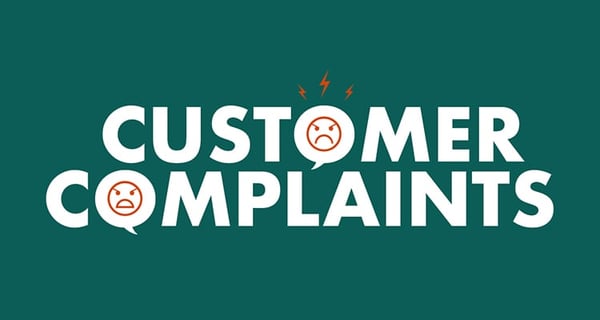On 15th September 2011, I was working in the Hurtigruten call center in Tallinn, Estonia, when news broke that there was a fire onboard one of their ships.
More than 250 passengers and crew members were stranded at sea while black smoke filled the air from the back of the ship.
As news started to trickle into the company, in went from a normal workday to one of the most chaotic days of my career.
"Wait, what happened?"
"Did you say a fire?"
"Is everyone okay?"
Within minutes, news of the fire was being spread on social media, passengers were calling in from onboard (!), customers were calling in about their upcoming trips and the volume of incoming support requests across all customer service channels increased tenfold. We felt unprepared and overwhelmed. Before we knew it, we were in crisis mode.
If that sounds familiar to you right now, you’re not alone.
Thousands of companies are in crisis mode. They will be feeling unprepared, overwhelmed and unsure what to do. Especially the customer service departments.
It’s unfortunate, but uncertainty tends to bring out the worst in customers.
When things go wrong, customers and the customer service department collide.
And this is especially true in the travel industry. The travel industry is in a state of emergency – airlines, agencies and hotels are fighting to keep their businesses alive, from cancellations, refunds and rebookings – just like I experienced in September 2011, they are all in crisis.
There is no best practice for handling a crisis in customer service. It’s all hands on deck. But being involved with the team at Hurtigruten during their crisis allowed me to see what companies can do during a time of distress.
Today, I'm in the process of cancelling and rebooking flights for trips that I had planned in the coming weeks. Yes, we’re in a crisis, but this time I’m able to see things from a new perspective.
Some of the companies I’m dealing with are doing everything they can to help their customers, while others aren’t so successful.
Given my experience at Hurtigruten and what I’m experiencing right now as a customer, I wanted to share a few customer service tips for what you can do if your support department is feeling overwhelmed.
Let me share a few real examples to inspire you.
While the examples below are from the travel industry, they can be applied to almost any industry that is feeling overwhelmed with incoming requests.
1. Reassure customers and communicate regularly
Don’t wait for your customers to contact you. You have to be proactive!
Like many companies are doing right now, create a dedicated webpage where customers can find out how to contact you, steps you’ve taken/ are taking to handle the crisis and updates to policies (i.e. refunds, cancellations, etc.).
At Hurtigruten, we created a webpage that was continuously updated based on the news coming in directly from the ship. It helped us control the information flow and distribute the information to the press. It also made it easy for customers to stay up-to-date.
A good example of an airline that had a dedicated landing page in Kiwi.com.
On their landing page, you can find information on refunds and cancellations, country restrictions and questions relating to the crisis.
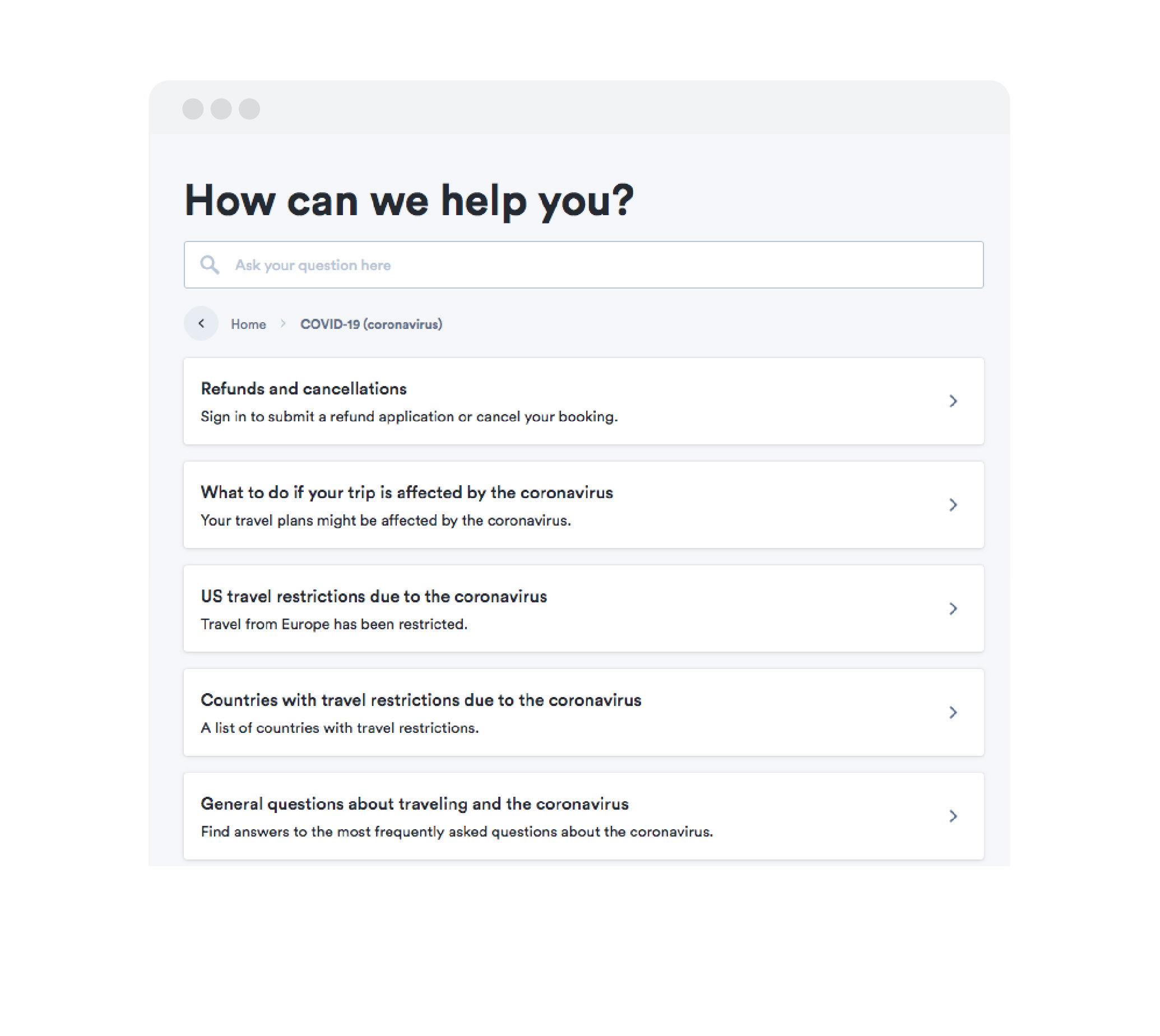
Many companies will be thinking about creating a similar resource on their website, but the only reason to do so if you have seen an increase in calls or email relating to the current crisis.
Another way to reassure your customers and be proactive is to contact them directly by email.
Whether it’s a message from your CEO, an update to operational hours or an update on how you are handling the situation, you can reassure your customers with a simple message.
A good example of using email to reassure their customers is from airBaltic.
On Saturday, 14th March, airBaltic announced that all flights would be suspended until April 14th. As I was traveling with airBaltic at the end of March, this announcement gave me all the information I needed to request a refund.
In the announcement, they informed customers that they would contact each passenger that will be affected by email and within 24 hours, the email had been received and I requested a full refund.
Here’s a copy of the email they sent:
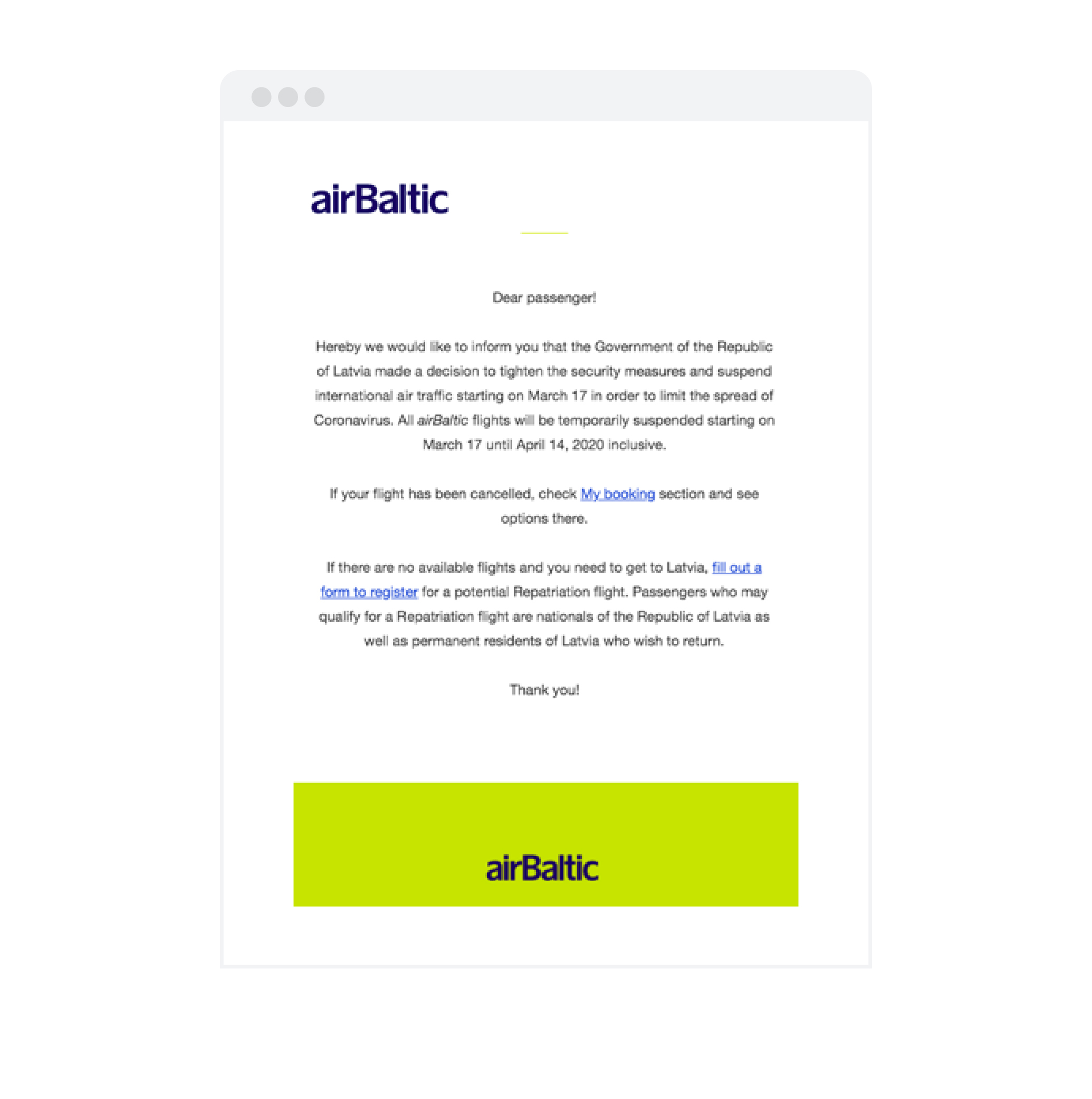
There's no such thing as over-communicating during a crisis. Your customers will appreciate hearing from you.
2. Set expectations on average wait times
Our own research found that the average response time for email support requests is 12 hours.
Lately, and based only on my experience, it’s taking more than 7 days for companies to respond.
Yet, 88% of customers expect you to respond within 60 minutes.
The frustration here is that I don’t know IF they will respond as I don’t know when I should expect to receive a reply – it hasn’t been communicated to me. This means I'm more likely to send a follow up email after a few days have passed, in case they haven't received it...
So, whether you handle questions from customers by phone, email or chat, keep your customers from becoming even more frustrated than they are by setting expectations on how long they can expect to wait.
At Hurtigruten, we communicated the average wait times in all channels, allowing us to set expectations immediately.
We were able to calculate the average wait time or response time by using the automated reports in our customer service solution. Once we had that calculated, we made updates to phone lines, email support and live chat so tthat if any customer wanted to contact us they knew exactly how long it would take before they could reach a free agent.
A good example is how British Airways set expectations clearly on their contact page.
They explain that call volumes are high (meaning customers should expect a considerable wait) and that to prioritize customers, you should only contact them if you are traveling within the next 3 days. This allows their customer service team to help passengers who are in desperate need of support - so, if you're travelling in 3 months, you should not contact them until nearer the time.
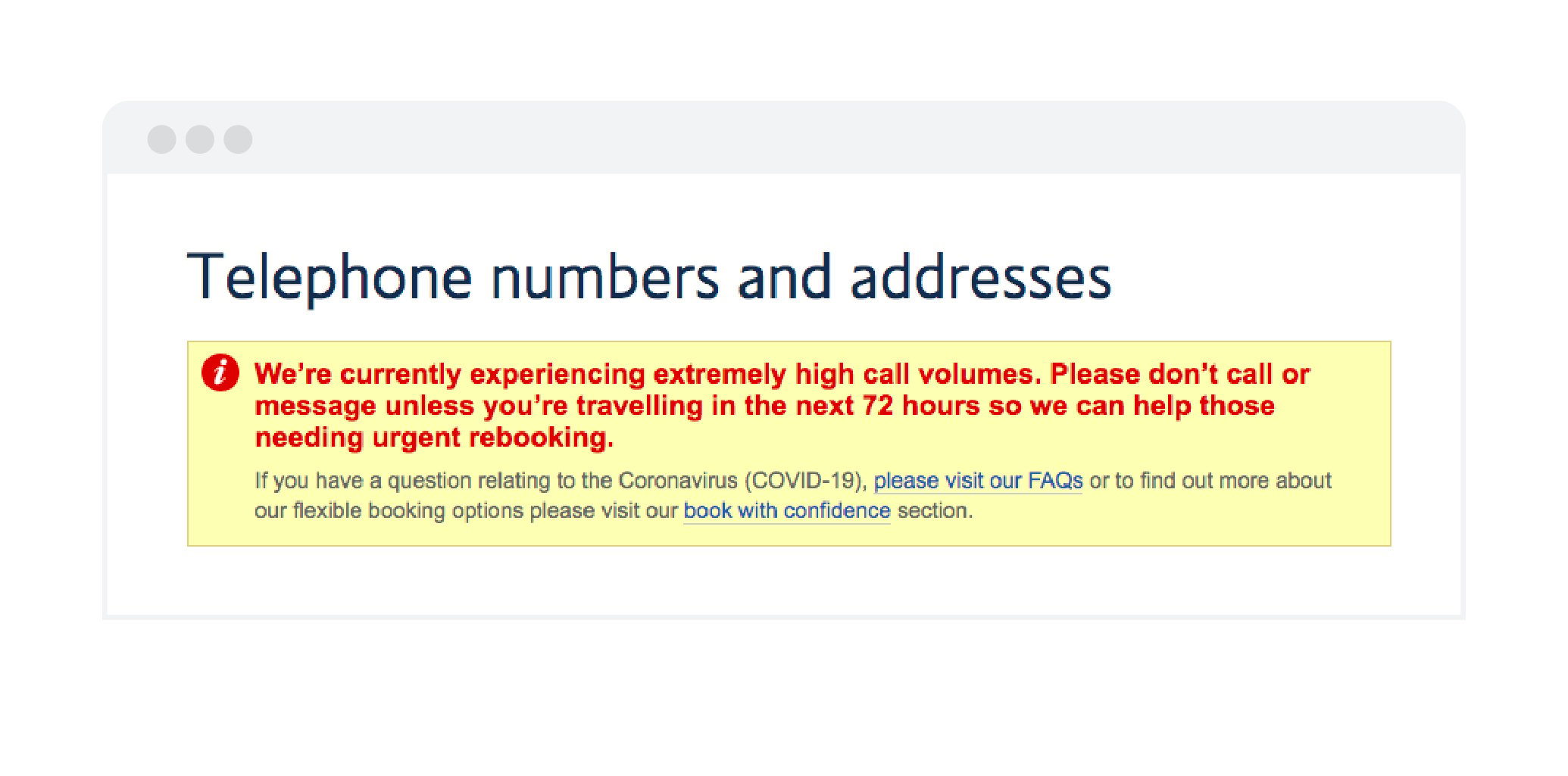
Another good example comes from Qatar Airways.
They set expectations for refund requests by informing me that it will take up to 5 business days to process the refund. This means that I won’t need send a follow up email to them after 2 or 3 days, which frees up their resources to focus on more urgent requests.
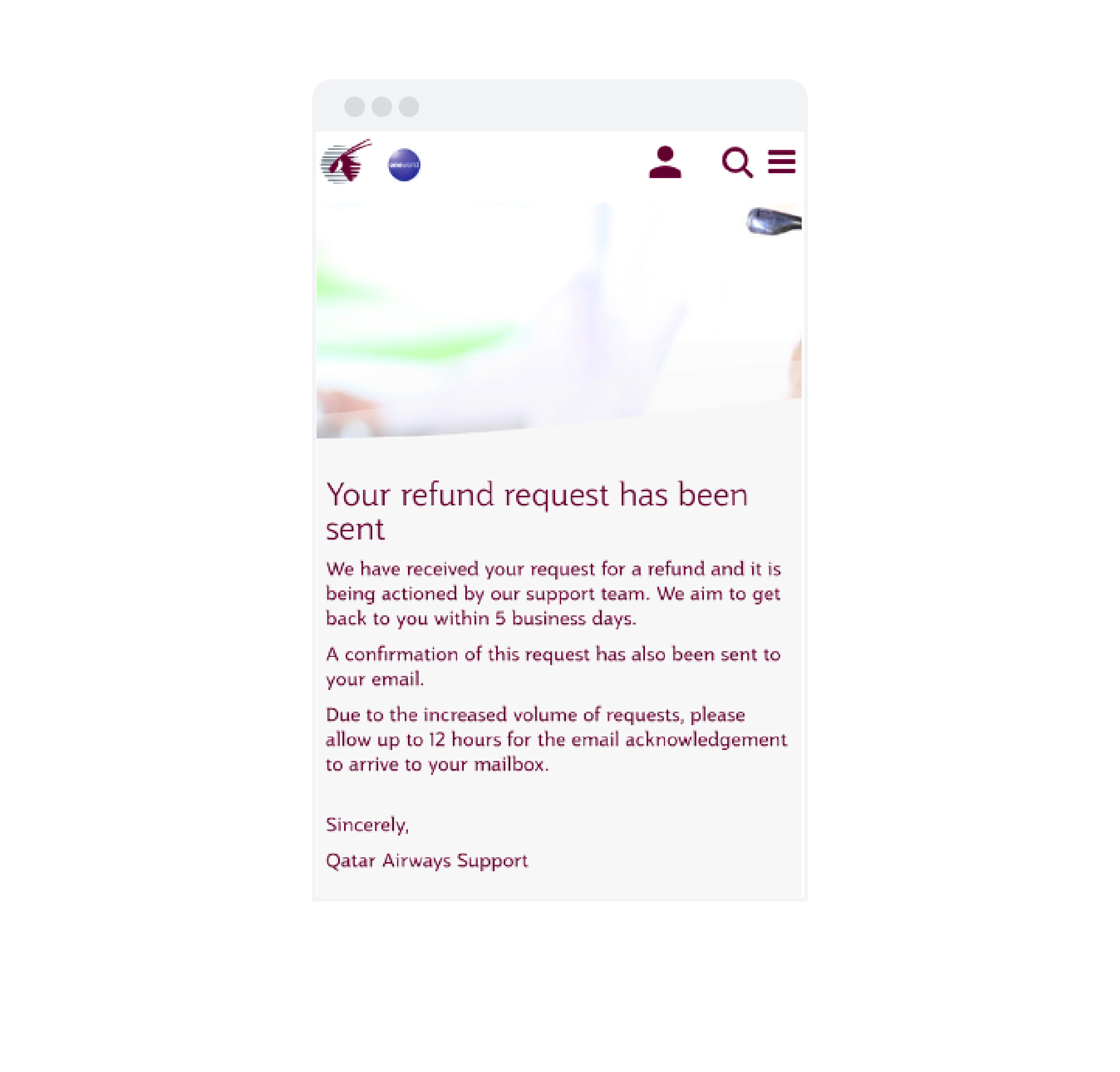
Keep your customers informed on wait times so they know when they can expect to speak with you.
3. Funnel all requests into one channel
Whether you have a team of 10 customer service agents or a team of 100, all support agents will be feeling stretched right about now – especially if your support team is remote. Rather than trying to spread the team across all communication channels such as live chat, social media, phone, email, etc. you can try to funnel all incoming requests through a single channel.
At Hurtigruten, our single channel was a web form.
The benefit of using a web form is that it you can ask for more information upfront, which allows you to then prioritize and allocate requests to the right department.
We prioritized incoming requests by including a “departure date” field in the web form.
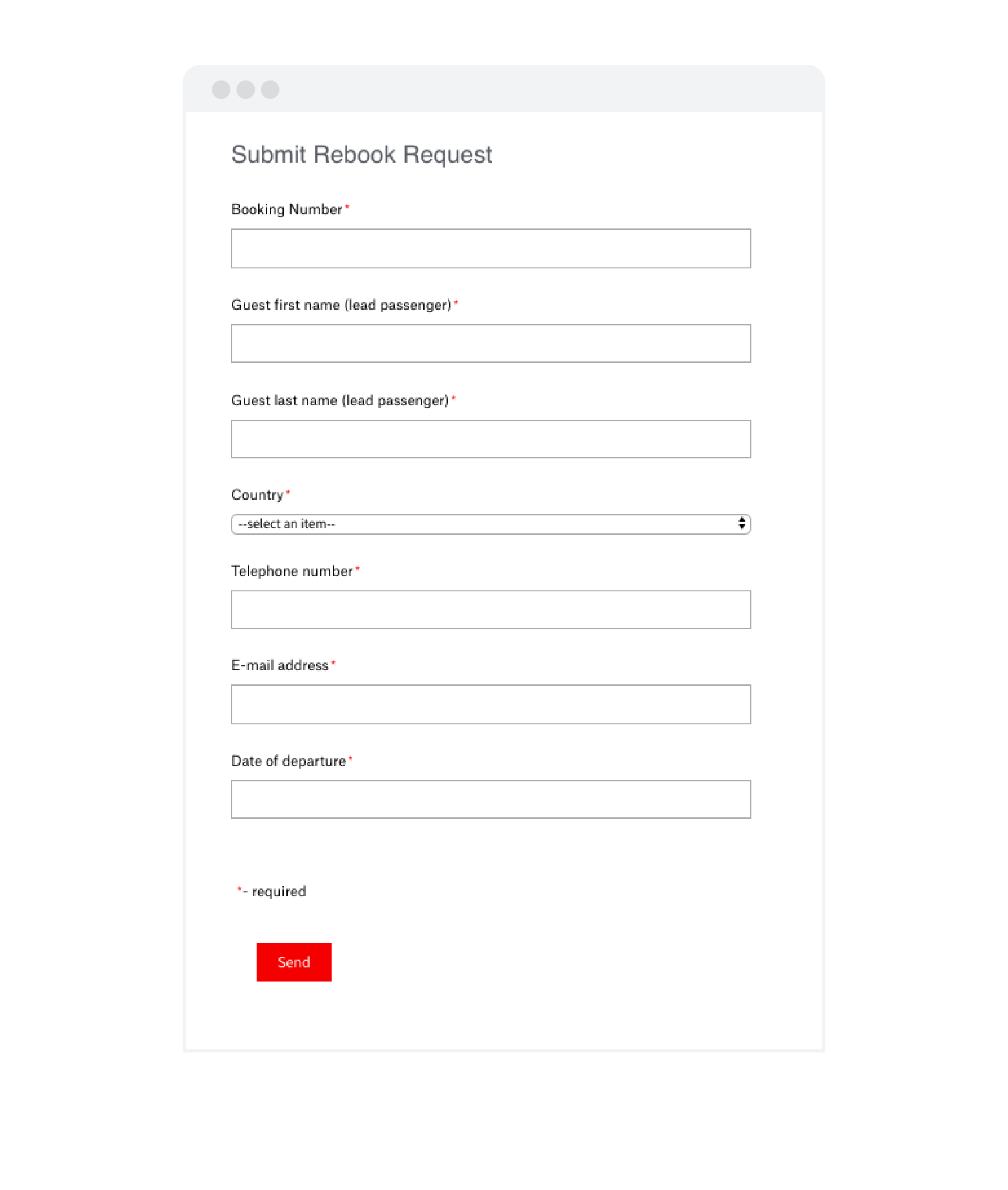
Anytime a completed form included a departure date within the next 7 days was prioritized and moved to the top of the service queue. We also used alerts that would inform us of any cases that were urgent and had not been answered within 3 days.
You could also include a field that allows customers to choose the category of their request such as refund request, cancellation, or change dates on an upcoming trip. This way, the request could be sent directly to a dedicated team or inbox to be handled accordingly.
Another benefit of using a web form is that you can immediately acknowledge that you have received a customer’s request by using an autoresponder. This is a great way to reassure your customers that you are working on their request.
In order to funnel all requests into one channel, you need to display the link to this (single) channel on all of the customer platforms you use. For example, you can include the web form on your dedicated landing page, you can link to it in your blog and you can mention it in the welcome message on your phone lines – providing it’s an easy to remember URL (i.e. www.example.com/crisis).
You can also link to the form by pinning posts on your social media profiles.
Here, British Airways has pinned a tweet, which funnels all their Twitter traffic to their dedicated landing page.
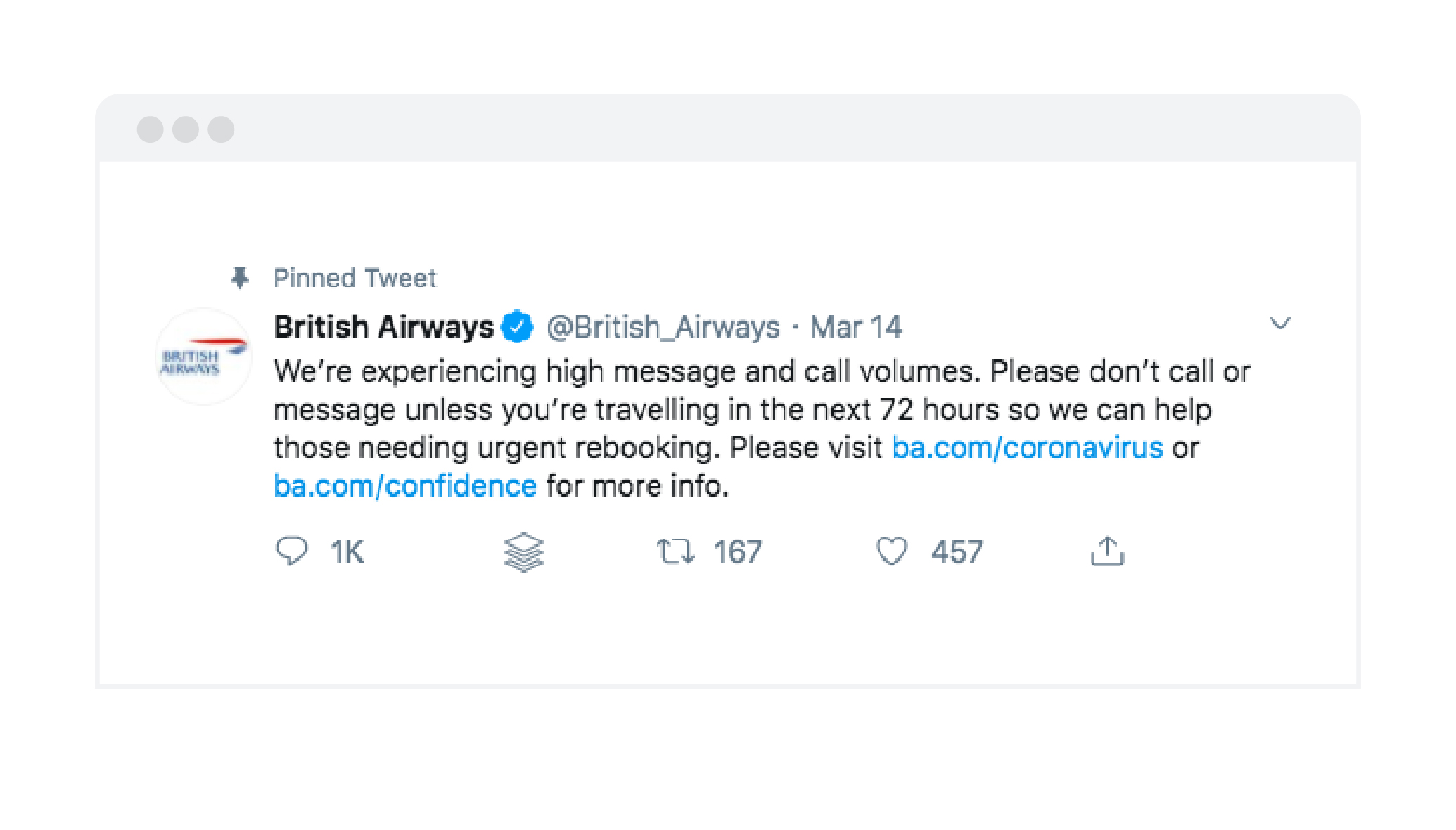
It’s much easier for a customer service department to manage a single channel, rather than multiple channels. But this brings me to my next point. We, as customers, have a responsibility, too.
So, what should customers do?
If you visit any social platform right now, you will see thousands of conversations (and complaints) being made about a lack of customer service from the world’s biggest and most loved brands.
These are made from people who have tried to call or email support, but haven’t received a response, so instead, have turned to social media in attempt to be heard – and that creates more work for customer service teams.
It’s easy to think that if no one responds to my initial request, I’ll open up a new line of communication. I only have one issue that needs solving, but each new channel I try to reach the support team in leads to additional volume.
This behaviour presents a huge challenge to customer service teams.
Using multiple channels to communicate the same message has become such an issue for Finnair that they are now spending their marketing budget on social media (Facebook ads) to kindly ask customers to stop doing it.
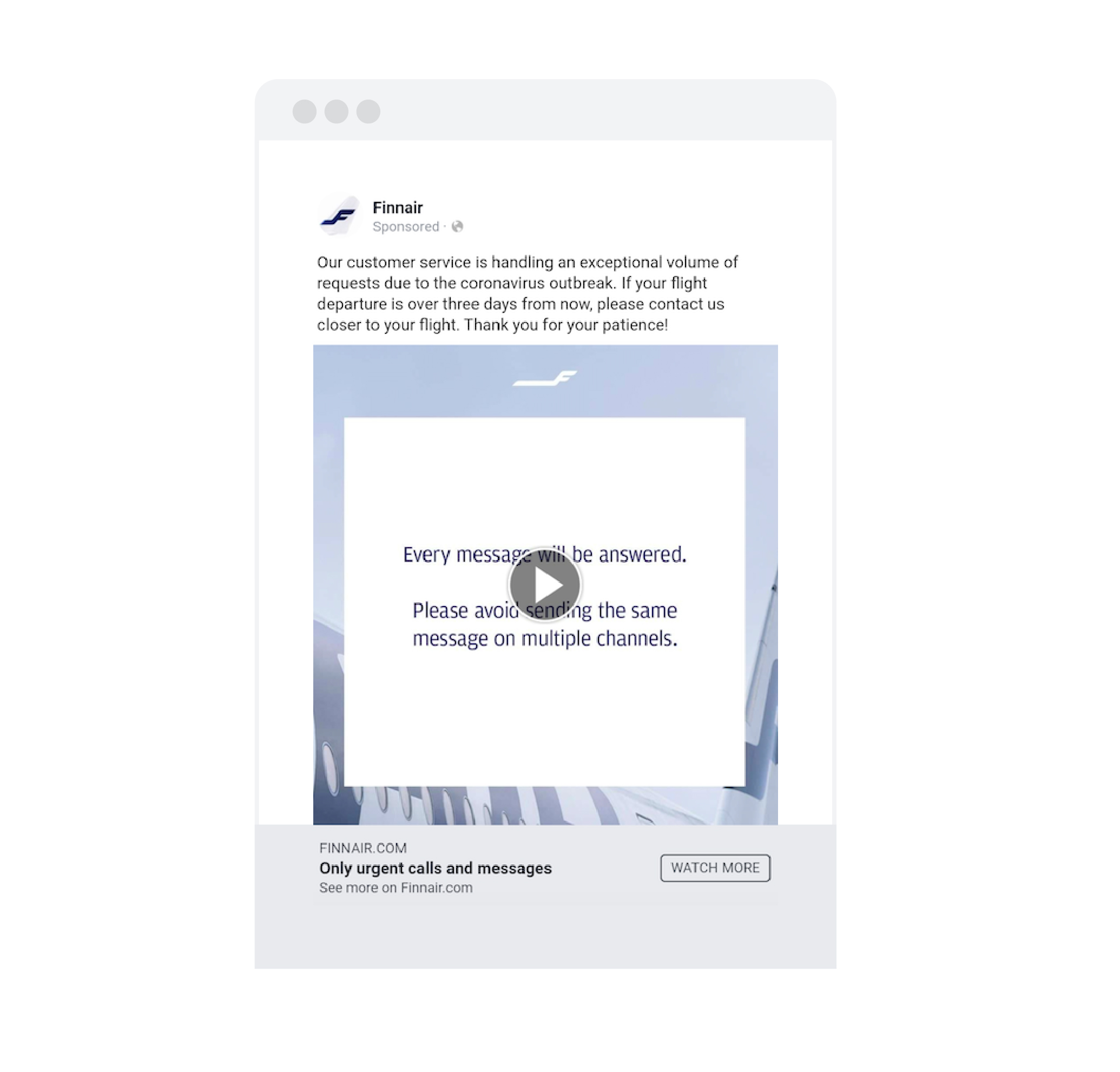
When resources are stretched, using multiple contact methods isn’t the answer. It’s only going to slow down a response. Let’s try to limit the number of times we contact support to allow the support team to focus on helping others, not just ourselves.
Conclusion
Many things don’t go as they are planned during a crisis.
It’s all hands on deck as support teams try to keep a customer calm and solve their issue, before moving into the next customer. And the next customer. And the next.
Empathy is important and the world needs a lot of it right now.
For customer service departments, this means reassuring customers, communicating often and setting expectations. And for customers, this means being patient and accepting things might be slower than usual.
Let's be kind to each other.
****
When I started writing this article, I looked back at steps the crisis team took at Hurtigruten in 2011. Just before publishing the article, Hurtigruten announced that all sailings would be suspended for the next 30 days – which of course will lead to a surge in customer support volume.
On their website, you will find a dedicated landing page, which includes a message from their CEO to reassure customers and a link to a web form, which includes the departure date as a field. They’ve been through a crisis before and I am confident that their support team (and yours) can handle this crisis, too.




